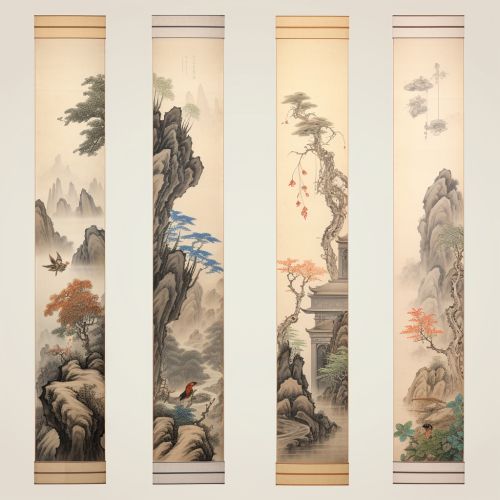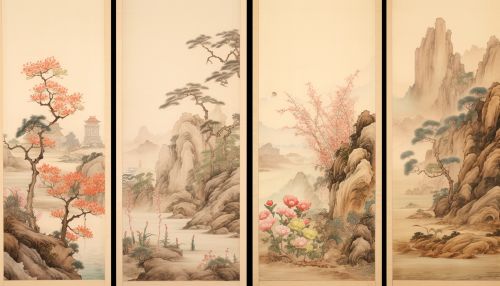Chu Ci
Origins and History
The Chu Ci, also known as Songs of Chu or Verses of Chu, is an anthology of Chinese poetry traditionally attributed to Qu Yuan and Song Yu from the Warring States period, with additions from other poets of the same period or soon after. The traditional version of the Chu Ci contains 17 major sections, anthologized with its current contents by Wang Yi, a 2nd-century AD librarian who served under Emperor Shun of Han.
The Chu Ci is named after the Chu region, a cultural area which was located in what is now the provinces of Hubei and Hunan, in southern China. This region was known for its distinctive culture, which was more associated with the Yangtze River Valley than the north China plain. Qu Yuan is generally acknowledged as the author of the Chu Ci, an anthology that includes both his own works and those of other poets from the same period or shortly thereafter.


Structure and Content
The Chu Ci anthology is divided into several parts, each of which is characterized by a distinct style and theme. The main body of the Chu Ci consists of long poems that are often complex in structure, with intricate patterns of parallelism, repetition, and variation. These poems are often characterized by their rich imagery and allusions, which draw on a wide range of sources, including ancient myths, historical events, and the natural world.
The Chu Ci also includes a number of shorter poems, which are generally simpler in structure and more direct in their expression. These poems often express personal feelings and experiences, and they frequently use the natural world as a metaphor for the poet's inner state.
Themes and Motifs
The Chu Ci is known for its rich and complex themes, which include political criticism, historical reflection, and personal expression. Many of the poems in the Chu Ci are characterized by their strong sense of personal emotion, which is often expressed through the use of vivid and imaginative imagery. The Chu Ci also includes a number of poems that express a deep sense of longing and melancholy, often associated with the poet's exile from his homeland.
The Chu Ci is also notable for its use of myth and legend. Many of the poems in the Chu Ci draw on ancient myths and legends, often reinterpreting them in ways that reflect the poet's personal experiences and feelings. These myths and legends often serve as metaphors for the poet's own situation, allowing him to express his feelings of loss and longing in a highly imaginative and symbolic way.
Influence and Legacy
The Chu Ci has had a profound influence on the development of Chinese literature. Its innovative use of language and form, its rich and complex themes, and its deeply personal expression of emotion have all contributed to its enduring popularity and influence. The Chu Ci has been widely studied and imitated by subsequent generations of poets, and it has played a key role in shaping the development of Chinese poetry.
The Chu Ci has also had a significant impact beyond the realm of literature. Its themes of political criticism and personal expression have resonated with many readers, and its innovative use of myth and legend has influenced a wide range of cultural forms, including art, music, and drama.
